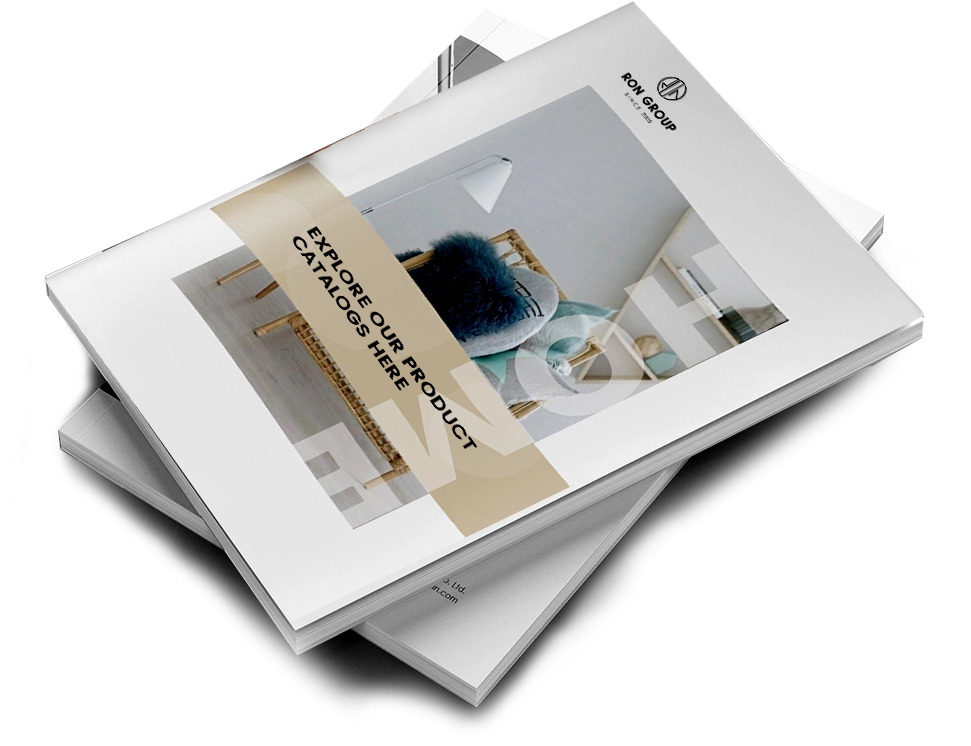
Restaurant Table Selection Guide: When Will Your Restaurant Tables Start Making Money?
Content
Your choice of restaurant tables affects your operational costs, customer satisfaction, and maintenance budgets. This guide offers key data on materials, sizing, and ROI to help project managers and procurement specialists make effective purchasing decisions. You'll find practical metrics and specific recommendations for selecting tables that meet your business requirements.
Restaurant Table Materials: Properties, Costs, and Selection Guide
Restaurant table materials directly affect your operational costs and maintenance schedules. The following data will help you evaluate materials based on durability, maintenance needs, and budget requirements.
Material Types and Specifications
Wood Tables
Solid wood tables, made from oak or maple, cost $200-400 per square foot. These tables last 8-10 years with proper maintenance. Oak offers superior scratch resistance, while maple provides better stain resistance. Wood veneers reduce costs by 40-50% compared to solid wood, but typically last only 4-5 years.
Required maintenance:
Quarterly sealing treatment: $15-20 per table
Daily cleaning with specialized wood cleaner
Immediate attention to spills to prevent staining
Metal Tables
Stainless steel and aluminum tables range from $150-300 per square foot. Wrought iron tables cost 30% more but offer twice the lifespan. Metal tables typically last 10-15 years.
Key considerations:
Stainless steel resists corrosion but shows fingerprints
Aluminum offers lighter weight but dents more easily
Wrought iron provides maximum stability but requires rust prevention
Laminate Tables
Laminate tables cost $80-150 per square foot with a 3-5 year lifespan. These tables use a synthetic surface layer bonded to particleboard or MDF core.
Maintenance factors:
Replace damaged surfaces: $40-60 per square foot
Avoid harsh cleaners that damage the protective coating
Check edge banding quarterly for separation
Glass Tables
Glass tables range from $180-350 per square foot. Tempered glass costs 40% more than standard glass but offers 4-5 times greater impact resistance.
Operating considerations:
Daily cleaning requirements: 2-3 times per service
Replace cracked surfaces immediately for safety
Factor in specialized cleaning supplies: $30-40 monthly
Stone Tables
Granite and marble tables cost $400-800 per square foot. These materials last 20+ years with proper care.
Maintenance requirements:
Annual sealing: $25-35 per table
Professional cleaning every 2-3 years
Special care needed for acidic spills
Selection Criteria for Different Operating Conditions
Traffic Volume Analysis
Match materials to your customer volume:
High traffic (200+ customers daily): Metal or granite
Medium traffic (100-200 daily): Wood or laminate
Low traffic (under 100 daily): Glass or specialty materials
Environmental Factors
Consider your restaurant's conditions:
High humidity areas: Choose metal or laminate
Outdoor seating: Select weather-resistant materials
Direct sunlight: Avoid glass and dark woods
Cost-Benefit Analysis
Calculate total ownership costs over 5 years:
Initial purchase price
Annual maintenance costs
Expected replacement timeline
Labor costs for daily cleaning
Special cleaning supplies needed
The total cost of ownership combines purchase price, maintenance requirements, and expected lifespan. Your selection should align with your traffic volume, environmental conditions, and long-term budget plans. These factors together determine the most cost-effective material choice for your specific restaurant needs.
Restaurant Table Dimensions and Space Planning
Precise table measurements and proper space allocation maximize your seating capacity while maintaining efficient service flow. These specifications and calculations provide the foundation for your floor plan design.
Standard Table Dimensions
Square Tables
24" x 24": Seats 2, suits coffee shops
30" x 30": Seats 2-4, standard dining
36" x 36": Seats 4, comfortable dining
42" x 42": Seats 4-6, spacious dining
Rectangular Tables
24" x 30": Seats 2, compact dining
30" x 48": Seats 4, standard dining
36" x 60": Seats 6, full-service dining
36" x 72": Seats 8, family-style dining
Round Tables
30" diameter: Seats 2-3, casual dining
36" diameter: Seats 4, standard dining
48" diameter: Seats 5-6, family dining
60" diameter: Seats 8, large groups
Oval Tables
36" x 48": Seats 4, efficient use of space
42" x 60": Seats 6, flexible seating
48" x 72": Seats 8, adaptable arrangement
Once table dimensions are determined, proper space allocation ensures optimal service flow and customer comfort.
Space Requirements and Layout
Minimum Spacing Guidelines
Between chairs (occupied): 18"
Between table edges: 24"
Main traffic aisles: 36"
Service aisles: 30"
Distance from walls: 24"
Capacity Calculations
Total floor area - service areas = Available dining space
Required space per seat:
Fine dining: 18-20 sq ft
Casual dining: 12-15 sq ft
Fast casual: 10-12 sq ft
Traffic Flow Requirements
Primary pathways: 5 ft width
Secondary pathways: 4 ft width
Emergency exit routes: 6 ft minimum
Service station access: 3 ft minimum
When standard configurations cannot meet specific space requirements, consider the following custom options.
Custom Solutions
Space-Saving Options
Wall-mounted drop-leaf tables: 50% space reduction
Modular tables: Flexible configurations
Corner banquette setups: 30% more seating
Special Configurations
Conference style: 30" depth x custom length
Banquet setup: 30" depth, modular lengths
Chef's table: 36" depth, variable length
Floor plan optimization requires precise measurements and adherence to local building codes. These dimensions ensure comfortable guest seating while maintaining efficient service operations and emergency access routes.
How Long Until Your Restaurant Tables Pay For Themselves?
Understanding your restaurant table investment means looking at both costs and returns to figure out when you'll recover your investment. Here's a practical guide to calculating and optimizing your payback period.
Total Cost of Ownership Framework
Initial Investment
Purchase price
Transportation costs
Installation fees
Initial training costs
Operational Costs
Regular maintenance requirements
Cleaning supplies and labor
Repair services
Staff training for proper handling
Long-term Considerations
Expected service life under your conditions
Potential refurbishment costs
Future replacement planning
Space flexibility needs
Consult with your financial team to:
Develop customized TCO calculations for your specific situation
Consider local market conditions and operational requirements
Factor in your restaurant's unique usage patterns
Account for your maintenance capabilities and resources
Additional Cost Considerations
Setup and Logistics:
Assembly service fees (if required): Discuss with vendor, typical range $15-25 per unit
Interstate shipping costs: Request quotes from multiple carriers, costs vary by distance and volume
Expedited delivery: May incur premium charges, request current rates
Volume pricing: Inquire about available discounts for bulk orders
Key Negotiation Points:
Request detailed breakdown of all additional fees
Compare assembly service options - in-house vs vendor provided
Evaluate shipping consolidation opportunities
Review vendor's volume pricing tiers and qualification criteria
Asset Management Considerations
Usage Intensity
Daily customer volume
Service hours
Staff handling practices
Maintenance Practices
Regular maintenance schedule
Quality of cleaning products
Staff training level
Response time to damage
Environmental Factors
Indoor/outdoor placement
Climate conditions
Sunlight exposure
Temperature variations
Work with your accounting team to:
Establish appropriate depreciation schedules
Define maintenance budgets
Plan for timely replacements
Monitor actual wear patterns
Investment Optimization Strategies
Develop comprehensive maintenance protocols
Train staff on proper handling and care
Document all maintenance and repairs
Track actual lifespan and performance
Review and adjust practices based on experience
This framework helps ensure thorough evaluation of all cost factors while recognizing that specific values will vary based on your location, operation type, and market conditions. Work with vendors, financial advisors, and your operations team to develop accurate projections for your specific situation.
Restaurant Table Procurement Guidelines
Successful table procurement requires systematic vendor evaluation and clear process management. These guidelines provide specific criteria and timelines for efficient purchasing decisions.
Vendor Evaluation Matrix
| Evaluation Criteria | Weight | Minimum Requirement | Target Level |
| Financial Stability | 20% | 5+ years operation | 10+ years operation |
| Production Capacity | 25% | 500 units/month | 1000+ units/month |
| Quality Certification | 15% | ISO 9001 | ISO 9001, 14001 |
| Service Network | 20% | National coverage | International coverage |
| Reference Projects | 20% | 3 similar projects | 5+ similar projects |
Proper timing and clear documentation streamline the procurement process and prevent project delays.
Procurement Process Timeline
Pre-Purchase Phase (4-6 weeks):
RFQ distribution: Week 1
Vendor response period: Week 1-2
Sample evaluation: Week 2-3
Vendor site visits: Week 3-4
Contract negotiation: Week 4-6
Implementation Phase (6-8 weeks):
Purchase order release: Week 1
Production monitoring: Week 1-4
Quality inspection: Week 4-5
Delivery arrangement: Week 5-6
Installation supervision: Week 6-8
Contract terms form the foundation for successful project execution and long-term supplier relationships.
Contract Negotiation Checklist
Essential Terms:
Price validity: 6 months minimum
Payment terms: 30% advance, 70% upon delivery
Lead time guarantee: ±5 days
Quality criteria: Detailed specifications
Warranty coverage: Comprehensive 3 years
Support Requirements:
24/7 service hotline
48-hour response time
Spare parts availability: 5 years
Regular maintenance service
Staff training provision
Complete documentation protects both buyer and supplier interests throughout the project lifecycle.
Documentation Package
Technical Documents:
Material certification
Load test reports
Fire safety compliance
Environmental certification
Assembly instructions
Maintenance Records:
Service schedule template
Inspection checklist
Cleaning guidelines
Repair procedures
Replacement parts list
These guidelines establish a systematic approach to table procurement. Regular monitoring of vendor performance and proper documentation maintenance ensure successful project implementation.
Make the Right Table Investment!
The right table selection depends on your space, traffic, and budget requirements. Carefully consider material durability, maintenance costs, and vendor qualifications to protect your investment. While premium tables cost more upfront, they often save money through lower maintenance needs and better resale value. Use this guide's specifications and checklists to select tables that meet your restaurant's needs.
Get the week's latest industry information
-
Real-Life Professional Restaurant Case Studies
Explore Now
-
Create a unique restaurant with over 95,700+products
Explore Now
-
Protessional Free 3D Restaurant Design
Explore Now
-
Still Have Questions About Opening a Restaurant?
Explore Now
Discover Our Exclusive Products
Explore our extensive range of restaurant and hotel supplies designed to enhance your operations. Find the perfect solutions to meet your needs.
Browse Our ProductsFREE 3D DESIGN
Boost your restaurant's success with our free 3D design service. Start building the restaurant of your dreams today!
Explore 3D Design Case
RECOMMENDED CASES
-

Maison Mai: Your Guide to Opening a Restaurant – From Design to Reality with Premium Furniture
RON GROUP provides Madamemai's Maison Mai with seamless one-stop design and customization solutions
Learn More -

La Rambla by Catalunya: Crafting Barcelona's Soul in Hong Kong - Custom Furniture Excellence
RON Group's custom Spanish-inspired furniture elevates La Rambla with artisanal aesthetics...
Learn More
RECOMMENDED BLOGS
-

5 Mistakes to Avoid When Buying Restaurant Furniture from China
Don't fall for costly oversights! Learn the 5 mistakes to avoid when buying restaurant furniture from China and ensure a...
 Ron2025-01-079 min read
Ron2025-01-079 min read -

RON GROUP Launches VR Experience to Explore Our Dynamic Showroom
Discover RON GROUP's VR showroom! Explore dining furniture, tableware, and customized services virtually or visit us in person to...
 Sylvia2024-12-163 min read
Sylvia2024-12-163 min read -

Building a Global Network: Ron Group's Restaurant Collaborations
Ron Group expands its global network with partnerships like Doju and Fonda Argentina, offering diverse dining experiences...
 Sylvia2024-11-2910 min read
Sylvia2024-11-2910 min read
Subscribe to RON GROUP
Stay up-to-date with the latest industry insights and expert advice. Together, we'll create your ideal restaurant.











